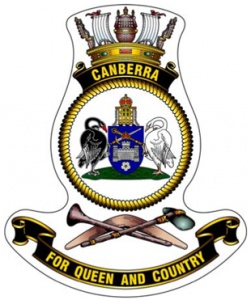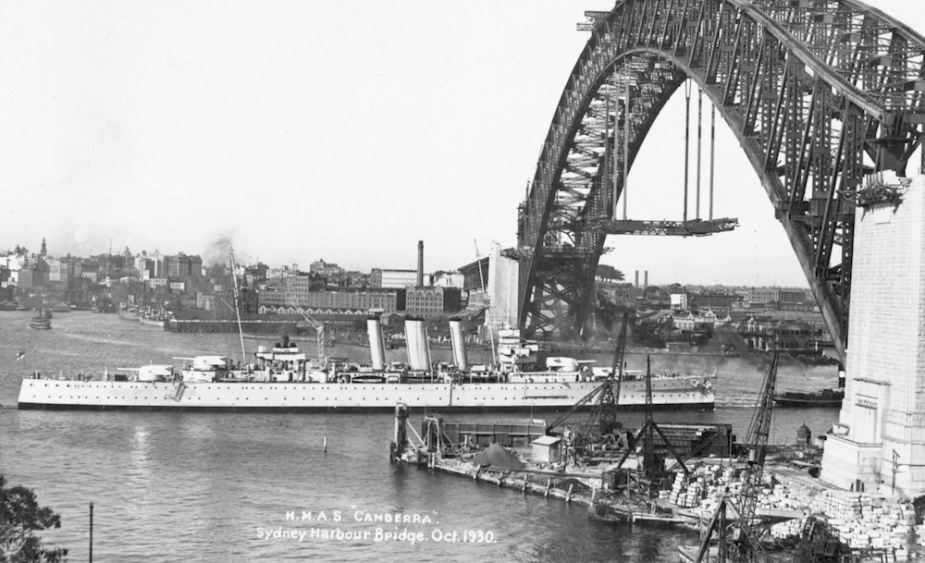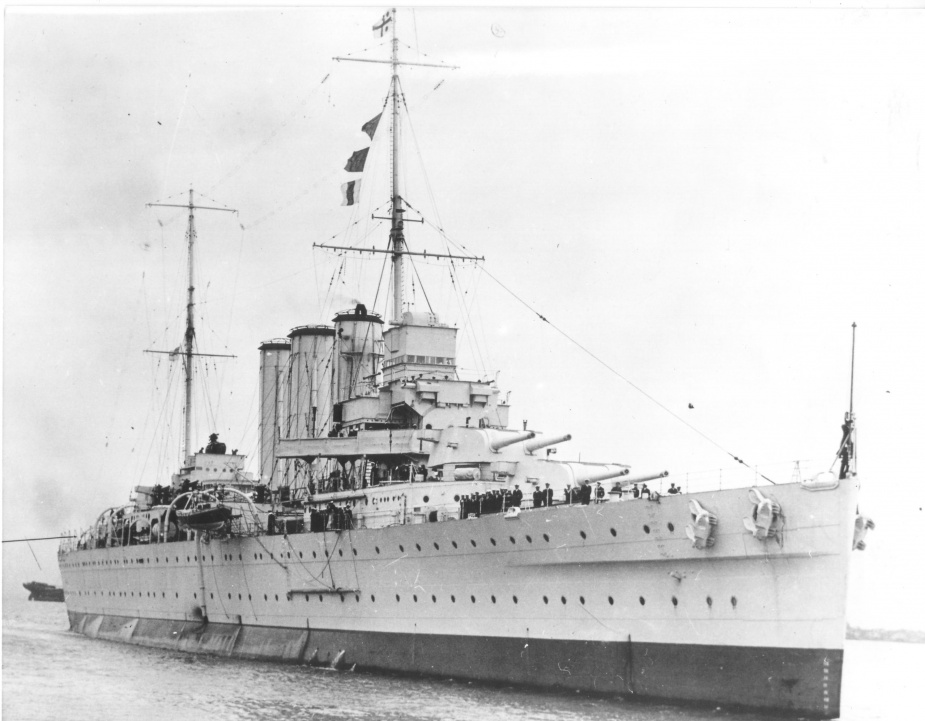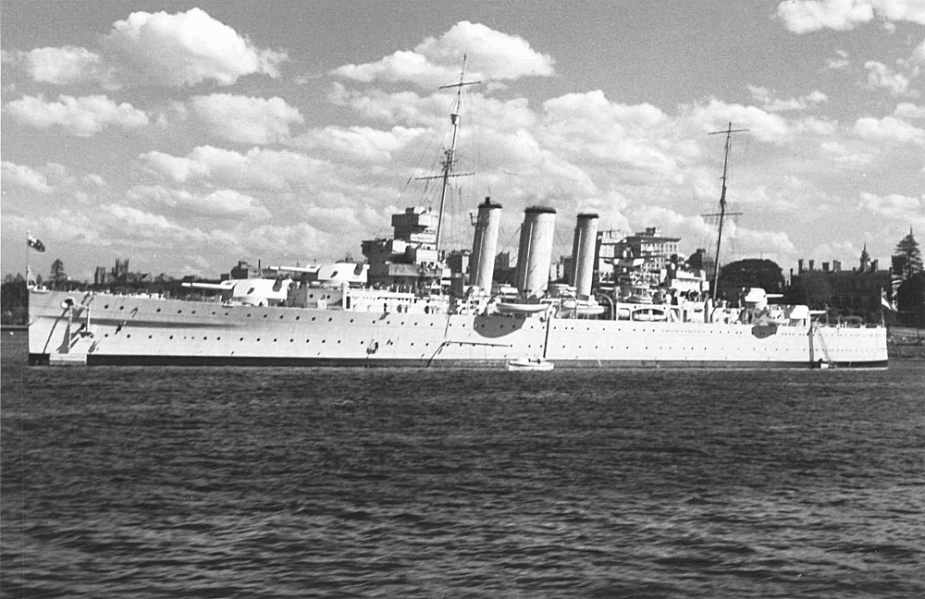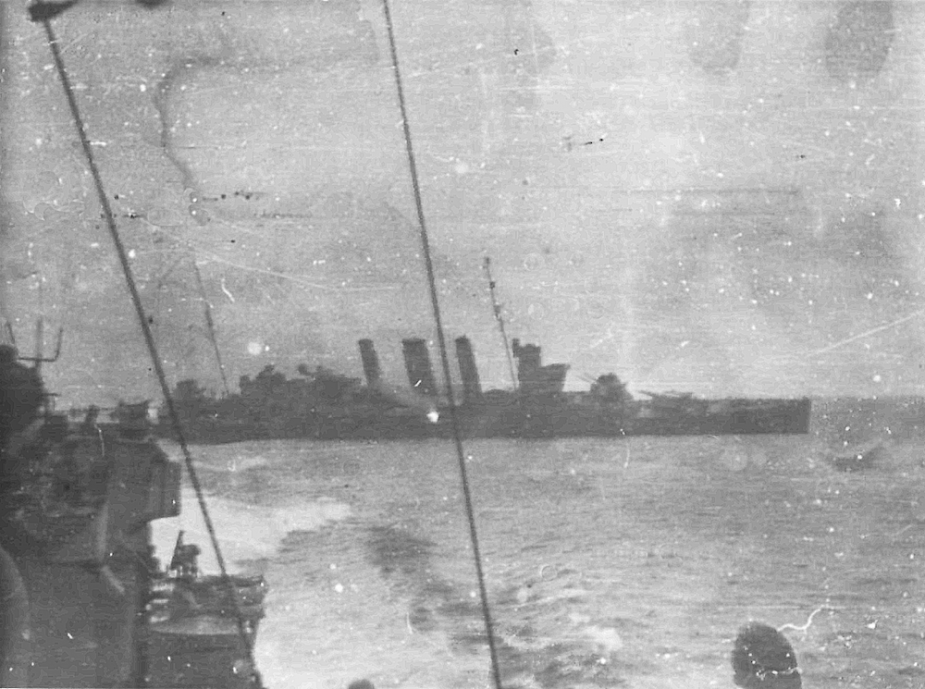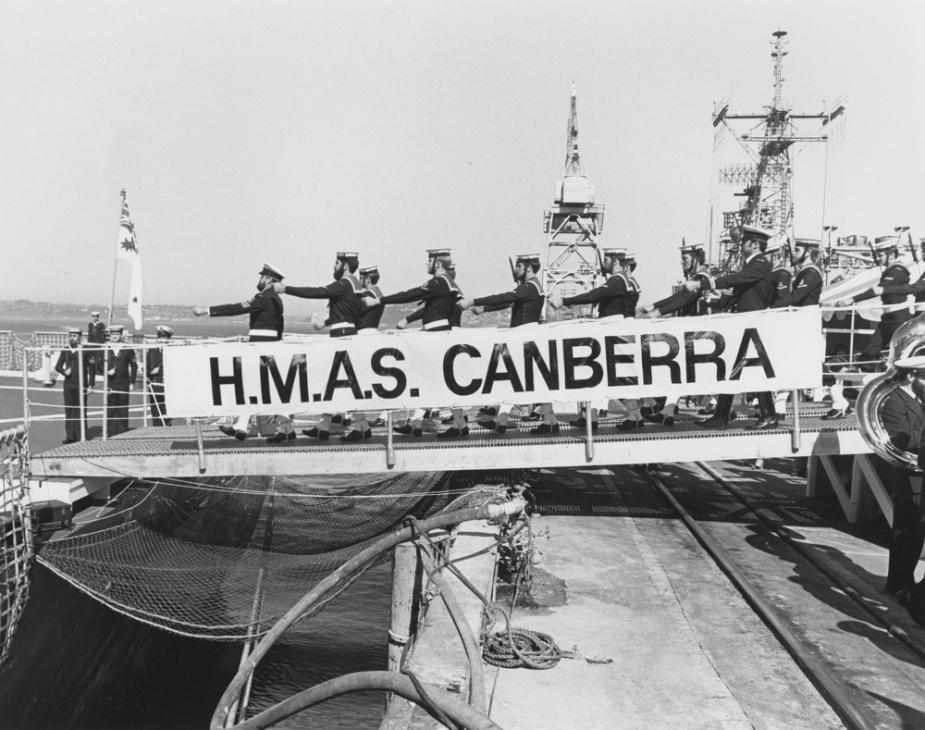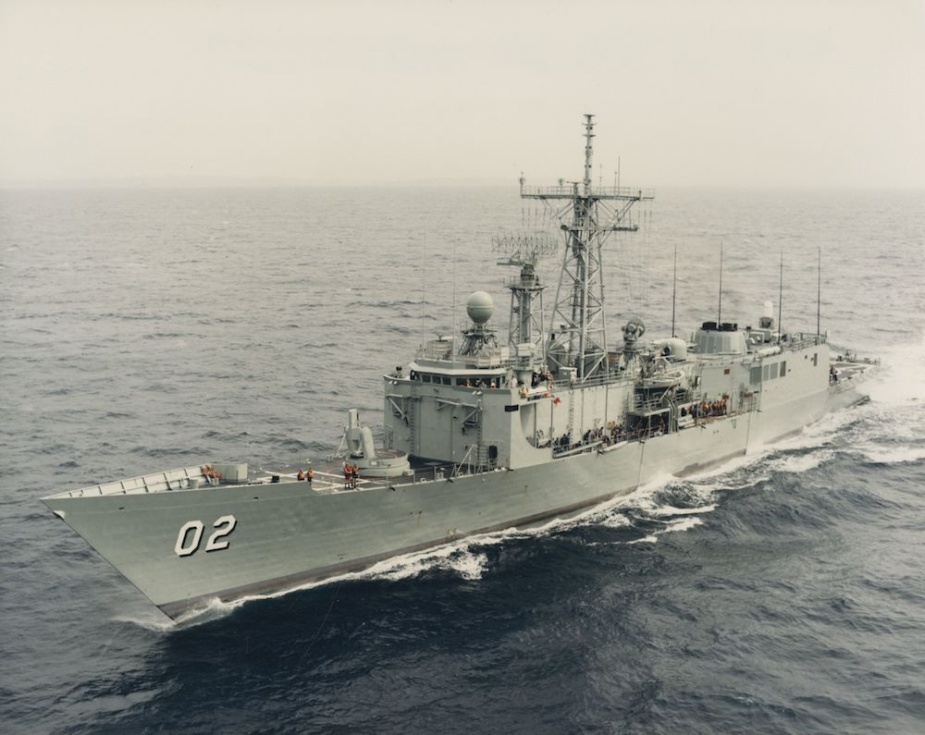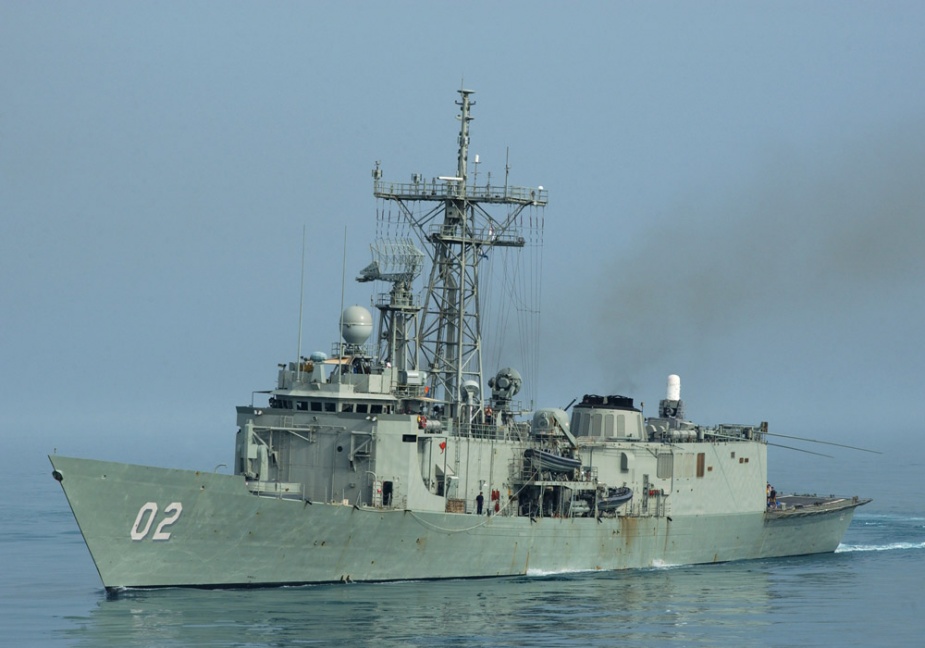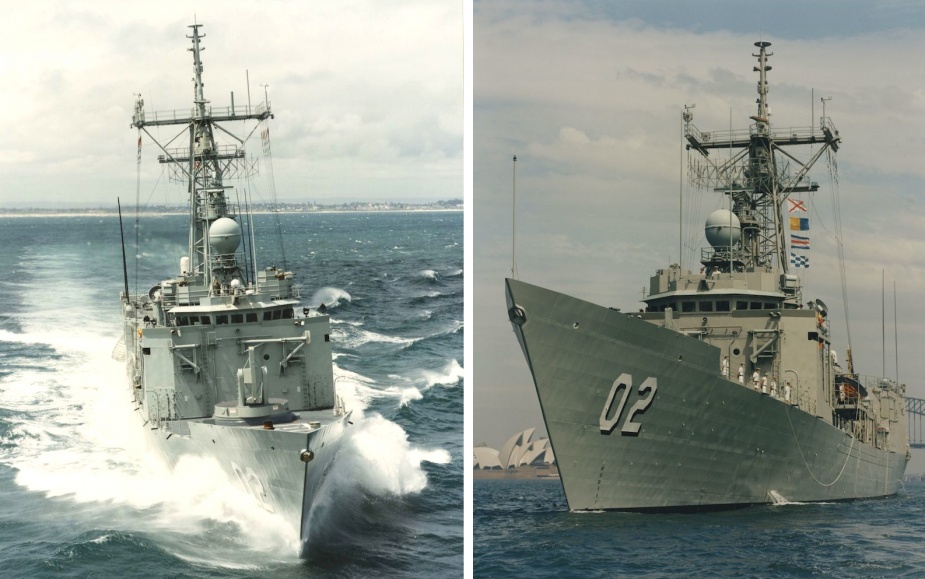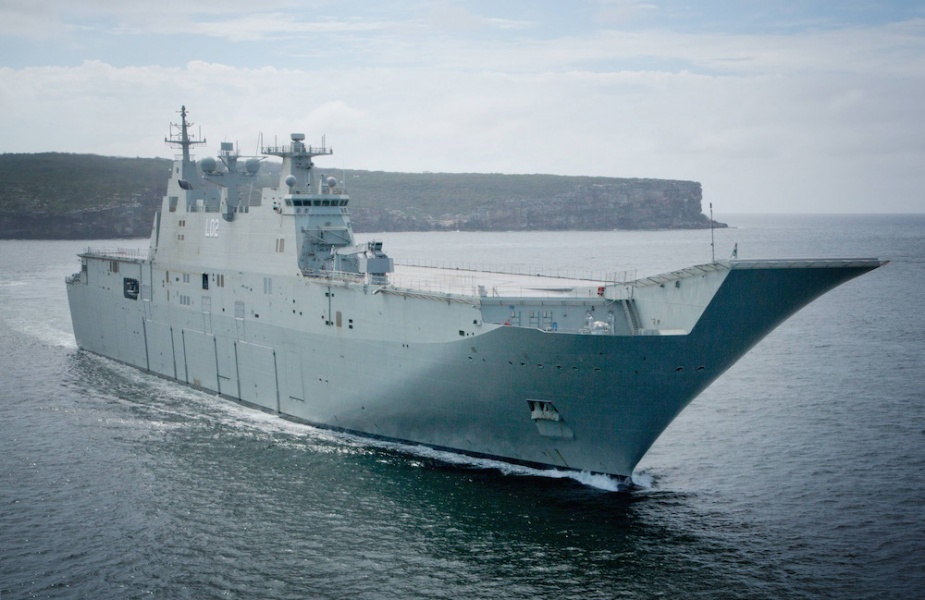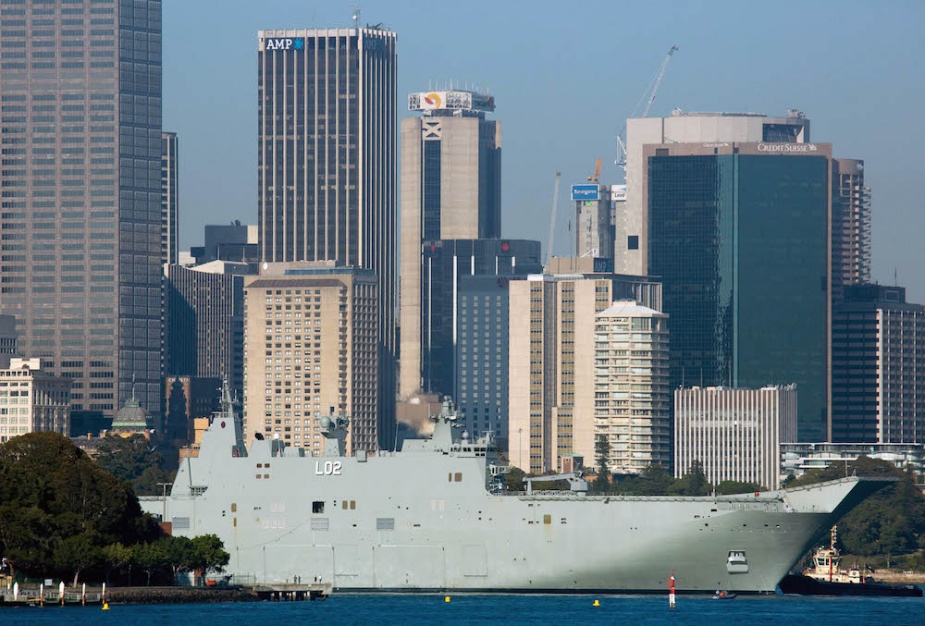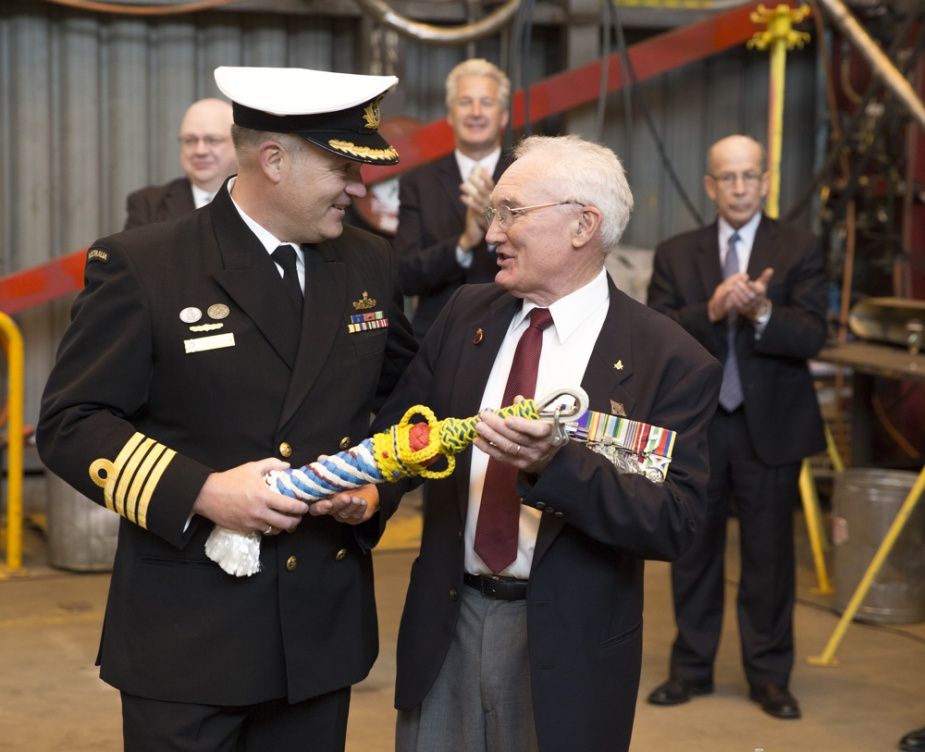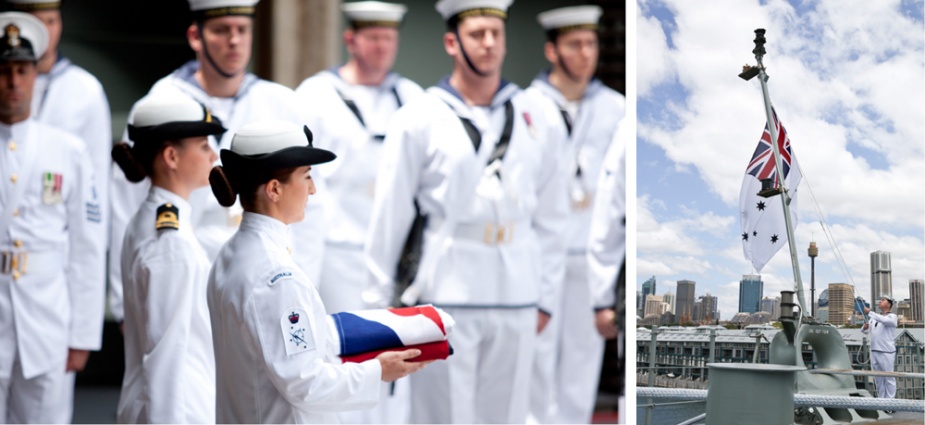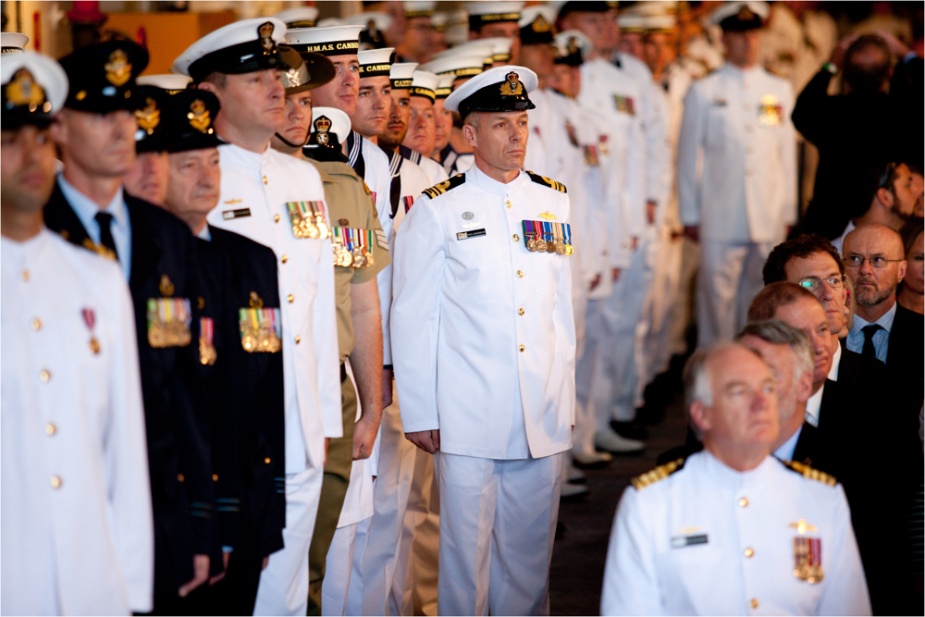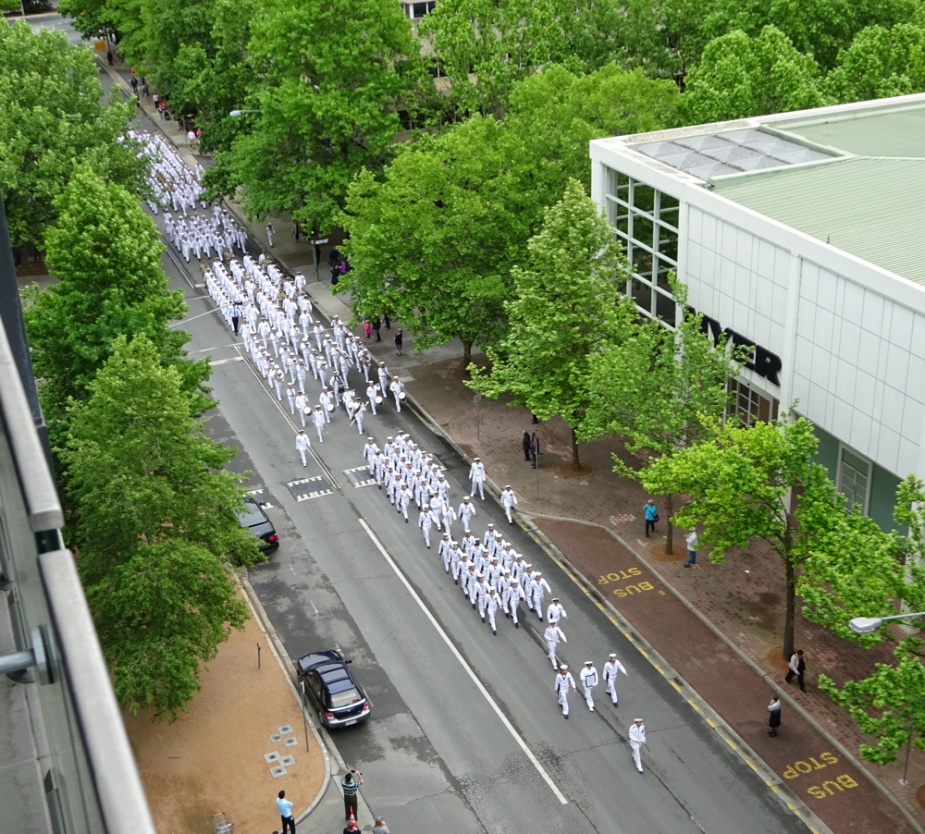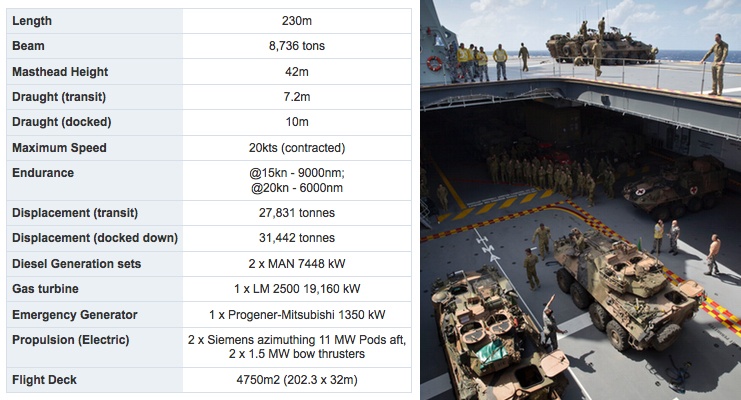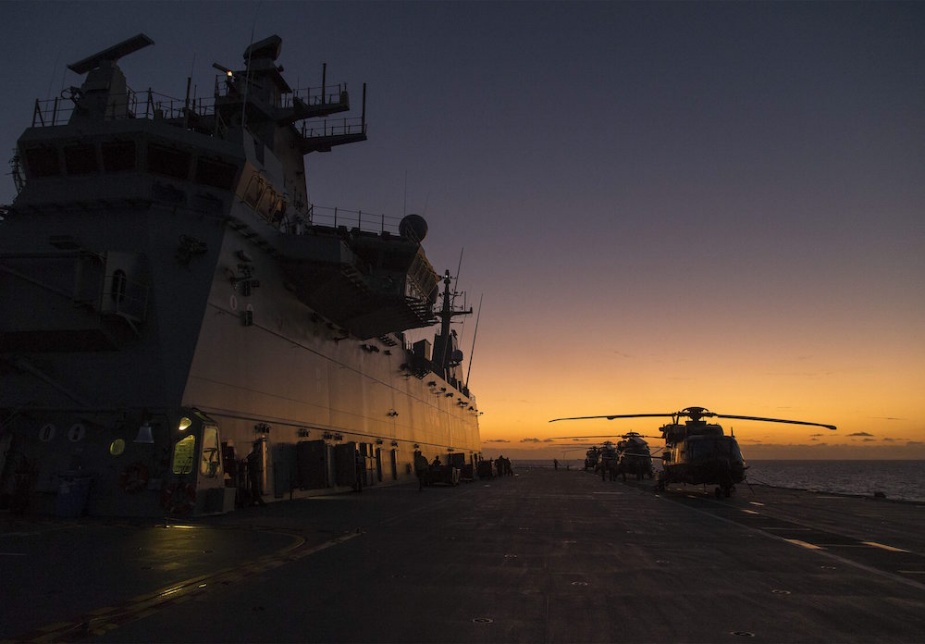Ships Named Canberra
In the annals of the Royal Australian Navy (RAN), two of its warships have proudly carried the name of Australia’s capital city, Canberra, during the 20th century. On 28 November 2014, a third HMAS Canberra, the first of two new amphibious ships (LHD) built for the RAN, commissioned in a ceremony conducted at Fleet Base East, Sydney, continuing the tradition into the 21st century. With this in mind, it is timely to review the history of the Canberras, examine their contribution to Australian maritime security and highlight the unique bonds forged between these ships and the citizens of our nation’s land-locked capital.
The name Canberra is derived from the language of the Ngunnawal people who traditionally occupied the district now recognised as the Australian Capital Territory (ACT). The word means a ‘meeting place’ of either rivers, or of tribes joining together to feast on Bogong moths in mountains to the south of the region. Recognition of Canberra’s Indigenous heritage is also reflected in the coat of arms of the city which features two swans, representing both the aboriginal and European cultures that now share the region. That coat of arms forms the centrepiece of HMAS Canberra’s ship’s badge.
HMAS Canberra (I)
The first RAN ship named Canberra was one of two 10,000 ton Kent Class heavy cruisers ordered by the Australian government in 1924. Built in the United Kingdom, Canberra commissioned at Clydebank on 9 July 1928, two months after her sister, HMAS Australia (II).
After five months working up in British waters, Canberra sailed from Portsmouth for Australia on 4 December 1928. En route, she visited Gibraltar, Las Palmas, the African ports of Sierra Leone, Takoradi, Lagos, Cape Town, Simonstown and Durban, before arriving at Fremantle on 25 January 1929. She then ‘showed the flag’ at Bunbury, Albany, Adelaide and Melbourne, finally arriving in Sydney on 16 February. In each port large crowds gathered to see the RAN’s latest cruiser with its impressive main armament of eight, 8-inch guns.
For the next ten years Canberra operated on the Australian Station. Together with Australia she shared the role of flagship of the RAN Squadron and the two formed the backbone of the RAN during the lean years of the Great Depression. At that time Canberra made only occasional overseas visits to the nearby Dutch East Indies, New Caledonia and Fiji.
Following the outbreak of hostilities with Nazi Germany in September 1939, Canberra began her wartime career conducting patrols and escort duties in home waters under the command of Captain Wilfred R Patterson, CVO, RN. In June 1940 Australian-born Captain Harold B Farncomb, MVO, RAN, assumed command, and sailed the following month for service in the Indian Ocean. There the cruiser performed important convoy escort work between Fremantle, Colombo and Cape Town. In July she participated in an unsuccessful search for the German raider Atlantis, then actively disrupting Allied shipping routes from Africa to India and the Malay States. Later, in November 1940, Canberra rescued survivors from the merchant ship SS Port Brisbane, sunk by another German raider, Pinguin. With the aid of her amphibian aircraft, Canberra conducted a prolonged but ultimately fruitless search for Port Brisbane’s attacker which had by then melted into the vastness of the surrounding ocean.
In early 1941 Canberra resumed her Indian Ocean escort and patrol duties making further searches for enemy raiders including the German pocket-battleship Admiral Scheer. In March, while in company with HMNZS Leander, she intercepted the German supply ship Coburg and the tanker Ketty Brovig, a former Norwegian ship captured as a prize the previous month by Atlantis. The enemy ships were engaged and subsequently sunk when their crews set scuttling charges.
When war broke out with Japan on 7 December 1941, Canberra was berthed in Sydney Harbour having already steamed more than 175,000 miles on war service. Her next task involved escorting troop convoys to New Guinea, Malaya and the Dutch East Indies.
In May 1942 Canberra had a lucky escape when three Japanese midget submarines penetrated Sydney’s harbour defences, launching a surprise attack on Allied ships lying at anchor. The depot ship HMAS Kuttabul was sunk during the raid and the harbour thrown into chaos.[1]
The following month Captain Frank E Getting, RAN, assumed command and the cruiser was soon back at sea taking part in offensive sweeps into the Coral Sea as part of Task Force 44, which included US Ships Chicago and Salt Lake City.
In August 1942 Canberra was operating as a component of a large Allied naval force supporting US landings at Guadalcanal in the Solomon Islands. On 9 August a large Japanese cruiser force conducted a surprise night attack on the Allied ships in an action that became known as the Battle of Savo Island. Canberra became an early victim of the engagement receiving at least 24 shell hits in the first two minutes and suffering a number of torpedo strikes. Captain Getting was mortally wounded, fires took hold and power was lost, leaving Canberra’s guns mute and the ship listing dangerously to starboard. A total of 84 of Canberra’s crew were killed. The wounded and survivors were subsequently transferred to US Ships Patterson and Blue.
Unable to raise steam, Canberra was sunk by USS Ellet at approximately 0800 on 9 August 1942. Also lost in the action were the US cruisers: Quincy, Vincennes and Astoria.
To honour Canberra, the US Navy commissioned the Baltimore Class heavy cruiser, USS Canberra in 1943. The only US Navy ship thus far to be named for a foreign capital. In February 2018, continuing the tradition of honouring HMAS Canberra (I), the President of the United States of America announced that a future Independence Class Littoral Combat Ship (LCS 30), will be the second US Navy ship to carry the name USS Canberra.
HMAS Canberra (II)
The second RAN ship to be named Canberra was one of six Adelaide Class guided missile frigates built to the design of the American Oliver Hazard Perry Class. Canberra’s keel was laid on 1 March 1978 and she was launched on 1 December 1978 by Lady Marjorie Tange, wife of Sir Arthur Tange, the then Secretary of Defence. She commissioned in Seattle on 21 March 1981 and following acceptance trials off the US west coast, she arrived in her home port of Sydney in March 1982.
As built, Canberra displaced 4100 tonnes. She was 135.6 metres in length with a beam of 13.7 metres. The hull length was increased to 138 metres during 1990-91 at which time her flight deck was strengthened to support Sikorsky S-70B-2 Seahawk helicopter operations. Two General Electric gas turbines saw her attain speeds in excess of 30 knots and her armament comprised one 76mm gun, Harpoon anti-ship missiles, standard surface-to-air missiles, a Phalanx close in weapons system and two triple mounted anti-submarine torpedo tubes. The frigate’s usual complement was 186, however, this increased to over 200 when helicopter flights were embarked. Canberra’s roles included air defence, anti-submarine warfare, surveillance, interdiction and reconnaissance.
She travelled widely, exercising with regional navies and visiting ports throughout the Indian and Pacific oceans as well as the United States. In 1985 her crew got a taste of Cold War operations when she was directed to intercept and shadow a Soviet task group led by the cruiser Frunze which was detected transiting the South China Sea. More benign tasks followed, including Royal Yacht escort duty in 1988 during the Queen’s state visit and participation in the 1988 Bicentennial Naval Salute in Sydney. Canberra later took part in the Royal Malaysian Navy’s International Fleet Review held in 1990.
Between October 1992 and April 1993 Canberra deployed to the Red Sea in support of Operation DAMASK VI to support the enforcement of United Nations Security Council sanctions against Iraq. There she conducted interception and boarding operations to stop the flow of illegal oil out of Iraq. During that deployment Canberra provided anti-air cover for USS Caron during a Tomahawk cruise missile strike against land based targets in Iraq.
January 1996 saw Canberra home ported in Western Australia where she remained actively engaged in diplomatic and constabulary tasks.
In May 1998, she was one of a number of Australian warships placed on standby in case the evacuation of Australian citizens from Indonesia was necessary following the fall of the Suharto regime.
Illegal fishing activity in Australia’s remote fisheries zone in the Southern Ocean twice saw Canberra tasked to assist the Australian Fisheries Management Authority. In April 2001 she escorted the foreign fishing vessel South Tomi to Fremantle in support of Operation TEEBONE before deploying to the Solomon Islands where she operated in support of an International Peace Monitoring Team during Operation TREK.
In January 2002 Canberra returned to the Southern Ocean apprehending the Russian flagged vessels Lena and Volga – both were intercepted poaching Patagonian toothfish in the Heard and McDonald Island exclusive economic zone. The masters of the vessels were subsequently charged and convicted.
The high operational tempo continued unabated when Canberra (II) deployed the following month for the Persian Gulf. There she joined HMA Ships Newcastle and Manoora on active service in support of Operation SLIPPER as part of the International Coalition against terrorism.
In her twilight years Canberra (II) patrolled Australia’s northern approaches supporting Operation RELEX II, a whole of government initiative aimed at deterring people smuggling operations.
During 2005, Canberra (II) conducted her final overseas deployment to Asia, visiting South Korea, China and Aichi, Japan (the host of the 2005 World Expo) and Malaysia.
On 12 November 2005, following 24 years of service and having travelled over 800,000 nautical miles Canberra (II) decommissioned at Fleet Base West, HMAS Stirling, Western Australia.
Despite being based far from her namesake city, Canberra maintained strong linkages with the national capital. Hundreds of Canberra’s citizens served in the frigate during her long commission and her main internal passageway was proudly named Northbourne Avenue, in reference to one of Canberra city’s main arterial roads. The ACT Government subsequently presented the ship with a replica street sign to make it official. Additionally, the men and women of Canberra (II) exercised their right of Freedom of Entry to the City of Canberra on four occasions - 1982, 1986, 1990 and 2000.
Following decommissioning, Canberra (II) was stripped of all useful fittings and naval heritage items and gifted by the Australian Government to the state of Victoria for use as an artificial reef and recreational dive site. Her hulk was subsequently sunk in 28 metres of water off Ocean Grove, Victoria, on 4 October 2009.
HMAS Canberra (III)
The current HMAS Canberra was built in collaboration between Navantia and BAE Systems - Maritime in Spain. The Canberra Class LHDs are bigger than Australia’s former aircraft carrier HMAS Melbourne (II) displacing 27,500 tonnes. They are more than 230 metres long and 27.5 metres high.
After being launched in Spain on 17 February 2011 Canberra was transported via the heavy lift-ship MV Blue Marlin from Spain to Australia where she arrived at Williamstown Shipyard, Victoria, in October 2012. There work was undertaken to add the various superstructure and mast components to the hull and complete her internal fit-out.
The Canberra Class LHDs are capable of carrying a combined armed battle group of more than 1100 personnel, 100 armoured vehicles and 12 helicopters. Six flight deck spots are available for operating medium sized helicopters such as the NRH-90 or S70A and four spots are available if required to operate the larger CH-47 sized helicopters. Refuelling is available at all spots. The vessel is equipped with one aircraft elevator (aft - 13.6 x 13.3m) and one multipurpose elevator (stbd side fwd - 11.2 x 17m) which access the hanger/light vehicle deck. A dedicated ammunition elevator also operates between the magazine and flight deck.
Commissioning
HMAS Canberra (III) commissioned at Fleet Base East on 28 November 2014. In his welcoming signal to the ship the RAN Fleet Commander, Rear Admiral S Mayer, CSC*, RAN announced:
The commissioning of HMAS Canberra at 1130 today marks an auspicious and historic day for the Royal Australian Navy. The introduction of the LHD platform to the fleet is not only a significant milestone for the Royal Australian Navy, but also for the Australian Defence Force.
The citizens of Australia’s capital city, Canberra, have much to be proud of as they continue their association with the third RAN ship to carry the name of their city.
HMAS Canberra (III) - characteristics
References
- ↑ Two of the midget submarines were destroyed during the raid while the third escaped. Its wreck was located in November 2006 off Sydney’s northern beaches.
Sea Power Centre - Australia
Sea Power Centre - Australia
Department of Defence
Canberra ACT 2600
seapower.centre@defence.gov.au


